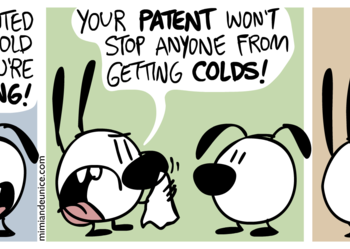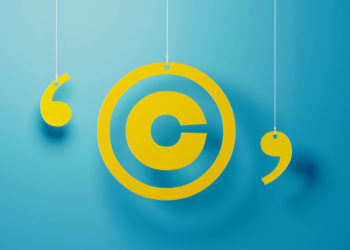As a society publisher, I have been struggling to understand how best to serve our mathematical community on issues of copyright, Creative Commons licensing, and openness.
I am concerned that as publishers we are moving ahead of our authors and readers and not considering what may be best for research and dissemination of research. These issues come into sharp relief as the publishing community struggles to respond effectively to the Plan S Rights Retention Strategy (RRS). Plan S is essentially requesting authors to publish in a Gold open access (OA) setting, which works for some academic communities but not others – mathematics being a community where there are very few funding sources available to authors to publish with article processing charges (APCs). Plan S does allow an author to publish an article in a Green OA setting with zero embargo, and this may be achieved with an author accepted manuscript, or the final version of the article.
This is all fine, but it is the next bit that has me confused. Plan S is requiring that a CC BY license be used. Clearly, a license does not affect copyright – the author may retain copyright. An author who then uses a CC BY license is then essentially providing blanket permission for reuse of their content provided there is attribution to the author. Is this a good thing? I am not sure. Does allowing reuse by others to derive profits, or combine with other products serve our academic communities and enhance research? There is perhaps an argument to be made for liberal reuse policies stimulating a serendipitous scientific finding in future years – but I see no evidence that this is more than a hope. I do understand that in some fields there may be a perceived gain in allowing, for example, Pharma to use a published work to enhance drug development – even if a significant motivating force is profit. But that gain remains unclear. CC BY allows the reuse of the words written in the article in that particular order as well as the images used in the article. It does not offer any ability to reuse the ideas or discoveries presented in the article beyond what is already permitted (and potentially not permitted through patents filed by the authors, which are still allowable under Plan S and other OA funder requirements).
Perhaps an argument in favor of CC BY licensing is to enhance the ability for text and data mining services to work effectively. If this is the case though, would a more nuanced license aimed at such services be a better approach? In some fields though, is it possible that such a liberal reuse policy is detrimental to the research endeavor?
I am not advocating a position here, but remain worried that these issues need to be thought through more carefully.
To help me sort these issues out, I asked a number of people who have given them serious thought to weigh in with their views on the Plan S Rights Retention Strategy, and indeed the use of CC BY Creative Commons Licensing. In this article I talk to some eminent figures with views on this topic.
The post is divided into two parts with one post appearing today, and the second post now available.
Readers should also revisit Rick Anderson’s excellent recent Scholarly Kitchen post on cOAlition S’s Rights Confiscation Strategy Continues as well as Lisa Hinchliffe’s overview of the RRS.

What is your view on the cOAlition S funding organization’s Rights Retention Strategy (RRS) when you consider stakeholders viewed from your position in the publishing ecosystem?
Nick Lindsay – Director of Journals and Open Access, MIT Press
The MIT Press has agreed to allow cOAlition S-funded researchers to post the Author’s Accepted Manuscript version (AAM) to a repository and use a CC BY license when doing so. We felt that this was a balanced approach that encouraged quick dissemination and wide usage of the ideas in a paper while at the same time protecting the Press’ financial investments in creating the version of record for these articles. The Press’ non-OA journals are not all in a position to adopt a fully-Gold OA policy with CC BY, and so the Green OA route was a better overall choice for us. Our policies prior to the Rights Retention Strategy allowed for Green OA posting of AAMs to non-commercial repositories without an embargo so the only change we made was the adding of the CC BY license. We feel that the addition of CC licensing is unlikely to have a major impact on our subscription titles given that the AAMs were already widely available and that any decline we’re seeing in subscription revenue is in line with other publishers that have more restrictive policies. That said, we continue to monitor the situation closely and if we determine that this licensing results in fostering commercial applications whose sole intention is to make money rather than push innovation in scholarly communications we will reevaluate our position.
Lynn Kamerlin – Professor of Structural Biology, Uppsala University, Sweden
The main concern I have is whether the Rights Retention Strategy is even legally enforceable, and the effect this will have on researchers. On the one side, researchers enter a contract with the funding agency, part of which includes the Rights Retention Strategy. On the other side, authors enter into a publishing agreement with the publisher. Which takes precedence when these are orthogonal? To implement the Rights Retention Strategy, cOAlition S is effectively asking researchers, in their role as authors, to violate the publishing agreement that they have signed with the respective journals (assuming the journals do not agree with the Rights Retention Strategy), or not publish in those venues. Navigating this requires familiarity with the technicalities of copyright law, which clearly, most researchers do not have, and it means ultimately that researchers will be trapped in the middle of what is likely to be a large mess, and it will be very negatively disruptive to the publishing process.
Niamh O’Connor – Chief Publishing officer, PLOS
I am supportive of the aim of the RRS which is ‘to give researchers supported by a cOAlition S Organisation the freedom to publish in their journal of choice, including subscription journals, whilst remaining fully compliant with Plan S.’ The cOalition S funders have been clear that they understand that there are costs associated with publication and that they will cover Open Access publication costs. This affirmation of support for the ‘Gold’ (or ‘Diamond’) route addresses concerns about the ‘Green’ option being promoted – that’s not what’s happening here. Note too that Open Access and APCs are not synonymous. While APCs have been instrumental in enabling OA to become part of the mainstream, they are not equitable for all. It is up to us as publishers to work with stakeholders to develop alternative sustainable models which we are doing at PLOS through our Community Action Publishing model and our flat fee offerings. In developing the RRS, cOalition S has addressed the concerns raised by a range of researchers, societies and publishers that individual researchers should have the freedom to choose where to publish. Allowing CC BY licensed Accepted Manuscripts as a route to compliance enables this choice – which is needed only where a journal or publisher chooses not to enable a ‘gold’ or ‘diamond’ OA option.
Steven Inchcoombe – Chief Publishing and Solutions Officer, Springer Nature
RRS is problematic because it asserts rights downstream in a process where others have also invested significant value, most importantly editorial and peer-review based changes. This discourages publishers from doing this when publishers should be investing in adding more value, so it’s deeply problematic for publishers. It also takes a ‘one size fits all’ approach when the nature of research and research funding can vary greatly by field and region, making it problematic for researchers. It could even be counter-productive to cOAlition S by encouraging some publishers to hold on to and protect subscriptions income for Version of Record (VoR) articles when cOAlition S’s long-term goals are to move the research system to a fully Open Research set-up.
Jasmin Lange – Chief Publishing Officer, Brill
I understand and support the principles of Plan S. All actors in scholarly communication should do their best to accelerate OA to improve research and enhance its impact on society. In its beginning, Plan S was an ambitious framework which clearly had the potential to achieve this goal. In the meantime, however, I fear that cOAlition S is investing too much energy in building up a complicated set of regulations which at times even contradict each other. The RRS is one such example.
There are various aspects which are problematic about the RRS. Let me describe one of them: I have always been vocal about the limited possibilities for humanities and social sciences (HSS) publishers to transition their publishing model to open access under Plan S conditions. I have warned about problems for HSS with the Green OA route as it does not have the same impact as Gold, Hybrid, or Diamond. The RRS has cemented the green OA path into policies and, and from my point of view, taken speed out of the development of openness rather than accelerating it.
Why is that so? Authors usually go down the path of least resistance. As Green OA is promoted actively as a compliant path, there is no real need to look for a fully-OA journal, transformative arrangement, or other experimental model of OA publishing. Authors will simply go to the traditional venue they have always published with in the hope that a zero-month embargo and a CC BY license will be acceptable. At first glance this could be good news for traditional publishers, as Plan S would have limited impact on copy flow. However, it is not good news if you really believe that proper OA is the best way to distribute research. From my point of view, the RRS, and the way it was marketed, diminishes the need to transition faster to OA in the eyes of authors and those publishers that shy away from the risks involved with transitioning to OA. It’s a backstop which could easily become the go-to route especially for disciplines with limited access to funding.
As you can tell, I am struggling with the notion of Creative Commons Licensing as the best path to openness. What are your views on the pros and cons of CC BY licensing?
Nick Lindsay
At The MIT Press we have a preference for CC BY-NC-ND for both our books and journal articles but we have been willing to work with funders who require CC BY or authors who are interested in using that license. The NC designation is, we feel, in the spirit of the overall OA movement and best reflects the kind of behavior we’d like to see happen downstream with our OA books and articles. Not allowing derivatives is, we feel, in line with the authors’ wishes to control their work as they see fit. It doesn’t, of course, rule out the practice altogether and people who want to create derivative works should contact the author for permission. We also encourage Creative Commons to experiment with more flexible license options for publishers.
Lynn Kamerlin
I strongly support openness and sharing, for example code developed by my team members is typically released under a free software GPL license, I have put my genomics data on open databases, etc. I am a big fan of Creative Commons Licenses, as they are well constructed, with many different control levels for content generators, and they facilitate smooth and easy re-sharing of material. This being said, CC BY specifically is problematic as it allows unrestricted reuse, which for example in the social sciences and humanities can be really problematic where derivatives can be generated that take away from the original meaning of the text, such as through low-quality translations. There is also concern about remixing of work for profit by third parties – personally I strongly prefer a CC BY-NC-ND license to address both these concerns (as I also believe it is more appropriate have a non-commercial reuse clause on publicly funded research, which should be free for the general public, not for advancing for-profit commercial interests, otherwise public funds are being redirected towards private enterprise). There is also the issue that author retention of copyright, something which is a key cornerstone of Plan S, is essentially meaningless when a CC BY license is applied, as discussed eloquently by, for example, Rick Anderson in several pieces at the Scholarly Kitchen. With regard to access for text and data mining services, I suggested already in 2018 (Nature News interview with Richard van Noorden: “Arguments over European open-access plan heat up”) that perhaps a new kind of open license is necessary to accommodate this, and I think this would still be the best way forward.
Niamh O’Connor
The purpose of CC licensing is to grant public permission to use the work. Having an open research ecosystem requires a complete re-think about ‘ownership’ of knowledge. Open Research is built on the creation of a Knowledge Commons. The principle is not ‘I made this; it belongs to me’ but rather ‘I have contributed a body of knowledge greater than myself which is available to everyone for the betterment of all’. This move from the individualist approach to one which more explicitly acknowledges the interdependence of research as an endeavor requires us to step out of the frameworks that are built on individualism and the ‘rational actor’ of neoclassical economics and recognize that we are building a completely different system of knowledge creation and sharing. The CC BY license allows researchers to be identified as the originator of the work while allowing others to build on it. The aim is not to license for the exceptions or uses we see now, but to be ready for those that haven’t been thought of – and to allow those leaps in discovery and innovation to occur for the benefit of society as a whole.
The area where I see a genuine research-driven concern about the CC BY license is in fields where the mode of expression is fundamental to the research work, as in the case in some humanities and social sciences. In those cases and in those cases only, then there should be an option to use a CC BY-ND license – as is allowed under the Plan S RRS.
Steven Inchcoombe
Obviously, the licenses applied to a piece of content determines what others can legitimately do with it. Applying CC BY to the accepted manuscript (AM) is a big change to what we have called Green OA and allows the AM to be commercialized and reused fully, undermining the ability of the publisher to recover its costs. This is made easier by tools like unsub and repository feeds that further enable this. So, this is a significant risk for publishers. Authors face risks as they too have no control over what happens to their work, and in the case of the AM, it hasn’t yet been proofed and signed-off by the authors, so authors may be quite concerned by this.
Of course, research does not happen in a vacuum, it is built on prior research and we want future research to build on it. We also recognize that technology is playing a growing role in accessing, using and re-using content without human intervention and we want to enable this. So traditional licenses are also not the answer in my view. Perhaps one of the other Creative Commons licenses, such as the CC BY-NC-ND license, could be a better minimum license level to apply to AMs.
I think this is far less of an issue for authors that chose to publish the VoR of their article open access (Gold OA) as the CC BY license is the already generally accepted market standard for Gold OA and authors make this decision knowing that. But for (most) other authors where cOAlition S is pressing for their AMs to be published open access, often without their involvement, I do think that CC BY-NC-ND makes more sense for these Green OA situations.
Finally, I also think that cOAlition S’s push to eliminate embargoes is likely to prove counter-productive and damaging to the wider scholarly communication system, but that’s probably the subject for another Scholarly Kitchen post….
Jasmin Lange
There is no doubt, CC BY licensing has its advantages and use cases, and many copyright holders are perfectly fine with it. CC BY gives clarity to and speeds up the work of researchers and teachers who want to reuse material from another author. It enables text- and data-mining also for commercial purposes. From the perspective of HSS, however, a blanket CC BY license is not preferred.
Look at book publishing which still relies on generating print revenues. Our current book processing charges (BPCs) are based on the understanding that we have the exclusive right to publish the print version of a title. If we didn’t have these rights, our BPCs would have to be higher and possibly too high for funders. Another example are translation rights: It is vital that the translation of an academic work is controlled by the copyright holder. We have seen it too often that a work is falsified in the translation process by, for example, translating only those parts of a work which will pass censorship. This is an everyday problem and publishers are here to protect authors from such practices.
More thoughts from our experts are available in Part Two of this post.
Discussion
3 Thoughts on "Plan S Rights Retention Strategy, Copyright and the Academic Community – Part One"
One of the underlying motivations of funding agencies for requiring CC BY is that it is seen as an economic accelerator, returning more money to the wider economy from research funding as a result of the free-for-all use of research outputs. That it allows commercial use is not an issue, but the point. Therein lies a tension between the communitarian ideals of some OA advocates and the hard-nosed neoliberalism driving some national and supra-national government endorsements of open access.
Lynne says: ‘ I strongly prefer a CC BY-NC-ND license to address both these concerns (as I also believe it is more appropriate have a non-commercial reuse clause on publicly funded research, which should be free for the general public, not for advancing for-profit commercial interests, otherwise public funds are being redirected towards private enterprise).’
However in the UK (and I believe in many other countries) governments of all kinds have been quite explicit that public funding for research is explicitly intended to advance for-profit commercial interests. Increases in the public research budget are because of subsequent societal benefits which require the engagement of private enterprise, as seen most immediately in vaccine development. Recent increases in the UK public research budget are to achieve public-private engagement, and explicitly expect private enterprise to roughly double match public investment with their own private investment in R&D. Looking at the pattern of public and private investment in R&D over many years shows that is not an unreasonable policy, although neither is it unreasonable for researchers to have ideological objections. Public Funders are behaving perfectly in line with the policies of their government in insisting on CC-BY as opposed to CC-BY-NC. The arguments around -ND are different though.
I think this is an important, if oft misunderstood point. Governments fund research to drive the public good, and that includes economic development for the country, including the creation of jobs and increased tax revenues. Commercial exploitation is a major reason why governments fund research, not something to be avoided.
What’s not clear though, is how a CC BY license, and reuse of research articles themselves (the actual words in that actual order and the images included as noted in the post above) drives further economic development. It’s hard to find concrete examples of this happening to point to. Having the material openly available to all to read certainly makes sense toward the economic goals, but reuse remains a question as to how it is supposed to contribute. In the post above, Niamh O’Connor echoes the most cogent argument for this, that CC BY is a bet for the future, that there’s no clear benefit to it now, but we might find one some day, and if we don’t license things openly now, we won’t be able to take advantage of that theoretical benefit somewhere down the line. The use of a CC BY license then has to be a decision on finding the right balance between the problems it causes now and the likelihood that the theoretical future use will emerge.
There’s a long history suggesting that restricting reuse of research discoveries drives economic development, as demonstrated through the Bayh-Dole Act in the US and long-running IP policies from most governmental and private funders, which allow researchers and their institutions to retain the IP generated from their research and protect it through patents. I wrote about these seeming contradictions back in 2013 — https://scholarlykitchen.sspnet.org/2013/08/06/is-access-to-the-research-paper-the-same-thing-as-access-to-the-research-results/


